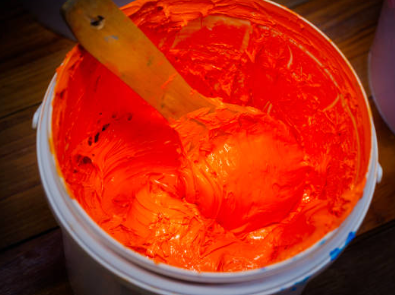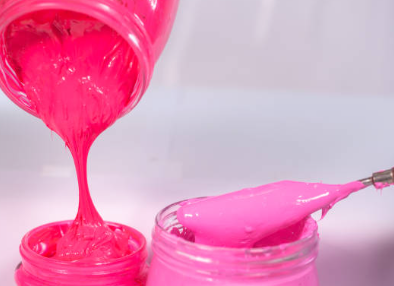Table des matières
L'art et la science de l'encre sérigraphique : guide du débutant
Learn how to pick the best silk screen ink. Avoid mistakes. Make cool shirts, posters, and more!
Why Silk Screen Ink Matters
Saviez-vous? The screen printing ink market will grow by 5.2% every year until 2030! People love making custom shirts, posters, and gifts. But picking the wrong ink can waste time and money.
For example:
- Bad ink can crack, fade, or feel scratchy.
- Good ink lasts longer and looks professional.
4 Types of Silk Screen Ink
Pick the right ink for your project:
- Plastisol
- Idéal pour: Bright shirts and hats.
- Good stuff: Stays bright and is easy to use.
- Bad stuff: Not eco-friendly and needs heat to dry.
- Fun fact: Plastisol is used in 48% of projects.
- Encre à base d'eau
- Idéal pour: Soft shirts and eco-friendly projects.
- Good stuff: Feels soft and safe for kids.
- Bad stuff: Takes a long time to dry.
- Encre de décharge
- Idéal pour: Vintage looks on dark shirts.
- Good stuff: Removes dye and feels light.
- Bad stuff: Smells strong and needs practice.
- Encre durcissable aux UV
- Idéal pour: Glass, metal, and phone cases.
- Good stuff: Dries fast with UV light.
- Bad stuff: Costs more and needs a special lamp.

5 Things to Check Before Buying Ink
Ask these questions:
- What are you printing on?
- Coton: Use plastisol or discharge ink.
- Polyester: Avoid plastisol (it cracks).
- Glass or metal: UV-curable works best.
- Does it need to last?
- Wash a lot? Pick plastisol.
- Want softness? Try water-based ink.
- Light or dark fabric?
- chemises foncées: Use discharge ink.
- Light shirts: Water-based or plastisol.
- How will you dry it?
- Presse à chaud: Plastisol.
- Air dry: Water-based.
- Is it safe?
- Rechercher Oeko-Tex ou Sans PVC labels.
- Conseil: 70% of pros utiliser Oeko-Tex certified ink for safety.
How to Choose: Simple Steps
Follow this easy guide:
- What are you making?
- Shirt → Fabric ink (plastisol or water-based).
- Mug → UV-curable ink.
- What’s your style?
- Bright colors → Plastisol.
- Soft feel → Water-based.
- What tools do you have?
- No heat press? Use water-based ink.
- UV lamp? Try UV-curable.
Mistake to avoid: 34% of beginners have ink that peels off. Test first!
Top 3 Mistakes (and Fixes)
Ne fais pas ça:
- Plastisol on polyester → Cracks.
- Réparer: Use water-based ink.
- Skipping test prints → Wastes ink.
- Réparer: Test on scrap fabric.
- Wrong heat setting → Ink rubs off.
- Réparer: Use a thermometer.
Étude de cas: A shirt company fixed 90% of misprints by switching to encre de décharge on black tees.
Stay Safe and Green
Protect yourself and Earth:
- Porter des gants and a mask with strong inks.
- Open windows or use a fan.
- Encres écologiques: Choose water-based or PVC-free plastisol.
- Throw away ink at a recycling center.
Fact: 60% of ink waste happens when it’s too thick. Use a Ford Cup to check.
Best Starter Kits Under $100
Start cheap, learn easy:
- Speedball Fabric Kit
- Price: $60
- Idéal pour: Water-based shirts.
- VersaCraft Multi-Surface Kit
- Price: $85
- Idéal pour: Shirts, wood, and glass.
- Green Galaxy Bundle
- Price: $75
- Idéal pour: Eco-friendly projects.
Conseil: Water-based ink costs 20% more but saves 35% in waste cleanup.

FAQ
Answers to common questions:
Can I use fabric ink on paper?
No. Use ink made for paper.
How long does ink last?
1–2 years if sealed tight.
Can I mix brands?
No. Stick to one brand.
Best eco ink for dark shirts?
Discharge ink (removes dye naturally).
Start Your First Project!
Souviens-toi:
- Match ink to your material.
- Test first.
- Stay safe.
Fun challenge: Make a shirt for a friend! Grab a starter kit and try it today.



